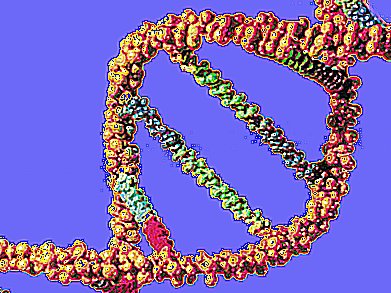DNA repair pathways are very important in the context of cancer biology and aging, but the tools the cell uses are not well understood.
Lorena Beese and other scientists at Duke University Medical Center, Durham, NC, USA, present the first structural information about exonuclease 1 (hExo1) in humans, a nuclease that plays important roles in DNA repair and recombination processes that maintain genomic integrity and will help scientists to understand several DNA repair pathways.
They propose a common mechanism by which this nuclease family recognizes and processes diverse DNA structures. hExo1 induces a sharp bend in the DNA at nicks or gaps. Frayed 5′ ends of nicked duplexes resemble flap junctions, unifying the mechanisms of endo- and exonucleolytic processing. Conformational control of a mobile region in the catalytic site suggests a mechanism for allosteric regulation by binding to protein partners.
The discovery is important for understanding the mismatch repair pathway of DNA, and more generally, it will help understand other pathways as well.
- Structures of Human Exonuclease 1 DNA Complexes Suggest a Unified Mechanism for Nuclease Family,
Jillian Orans, Elizabeth A. McSweeney, Ravi R. Iyer, Michael A. Hast, Homme W. Hellinga, Paul Modrich, Lorena S. Beeses,
Cell 2011, 145 (2), 212–223.
DOI: 10.1016/j.cell.2011.03.005




